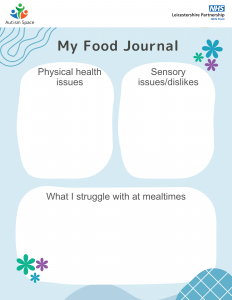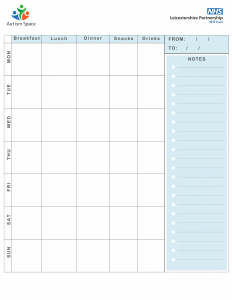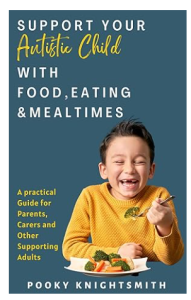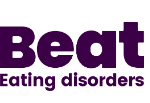What difficulties do autistic people often experience with eating and drinking?
- Food related sensory processing – Autistic people can often struggle to tolerate different tastes, textures, appearances, and smells of food. Sometimes, there may also be a fear of swallowing or choking. Example: “Raj hates soup but loves crunchy cornflakes”.
- Environment related sensory processing – Autistic people can be particular about what they use for eating and drinking and which aspects of the environment they can tolerate. This can make a difference in how comfortable and safe they feel. For example, the table, crockery, and cutlery – does it meet sensory preferences, e.g. does it feel and look right? Is it the same as yesterday? Consistency is often key! Consider the environment around you as lighting, sounds and the amount of people in the room can all cause sensory distress for an autistic person. Example: “Jane will only use one particular knife, fork and plate”.
- Interoception – This is your body’s internal sense that tells you if you are hungry, thirsty, need the toilet or are in pain etc. Autistic people may have trouble interpreting these signals. This can result in autistic people eating infrequently, or even over-eating. Example: “Thomas will get upset and doesn’t understand that it is because he is hungry”
- Digestive issues – Many autistic people report a range of digestive issues like constipation, diarrhoea, and IBS (irritable bowel syndrome) etc. Example: “Priya avoids eating because she worries about getting diarrhoea afterwards”.
- Routine and predictability – For many autistic people, having structure and routine can reduce anxiety around eating and drinking. A takeaway burger or a specific brand of chocolate will always look and taste the same, whereas a piece of fruit will vary in taste, texture and size which can lead to food avoidance. Example: “Milo will only eat digestive biscuits and refuses all fruit and vegetables”.
- Social factors – All of the above factors can contribute to social anxiety around eating with other people. This can sometimes lead to autistic people avoiding food related social situations. Some autistic people also find it distressing to see or hear other people eating or drinking – finding this overwhelming to the senses- and may therefore prefer to eat alone. Example: “Sandra worries she will look silly saying no to food and instead avoids going out”.
- Emotional factors – Be mindful that some autistic people may have eating and drinking difficulties and can find hearing and seeing information about food stressful. Therefore, think carefully about whether you really need to broach the topic – and if so, how to go about this sensitively.
All the above can affect an autistic person’s eating and drinking habits. Whilst this can sometimes be challenging and stressful, it is usually manageable.
Many autistic people have favourite foods that they feel safe and comfortable eating consistently. When foods always look and taste the same, this can reduce food-related anxiety. It’s OK to eat a lot of the same foods – and not so much of others, if the person’s overall levels of nutrition and hydration are within safe limits. It is not helpful to just tell the person that they need to stop eating the same foods and eat different ones instead.
Over time an autistic person may find they increase the types of foods they are able to tolerate. This is probably more likely to happen if others around them do not put them under any pressure to try different foods – although opportunities can be offered for them to try if the autistic person so chooses.
Autistic people, their parents or carers often worry that they are ‘fussy eaters’. However, the chances are they are probably doing better than you might think.
Whilst many autistic people’s eating and drinking habits can be quite different from non-autistic people’s, most of the time, it’s usually not something to worry too much about.
However, in some instances, any combination of the factors listed above can potentially result in poor nutrition and hydration or other physical or mental health issues. When there are concerns about this possibility, there are some things that can be done to help.
What to do if you are worried about an autistic person’s eating and drinking?
One thing that can be extremely helpful for this is a food journal documenting overall eating and drinking habits. This will help to identify any changes you can make at home in the first instance.
If you still have concerns, contact your GP, who will ask for some more information and may arrange some tests.
How to make an informative journal for your GP or other health professionals
Make a note of the following factors, or download our handy food journal template by clicking here.
Factors to include in the journal:
- Any sensory sensitivities/preferences (e.g. interoception, environment, food tastes/textures)
- Any physical health issues. For example: any known nutritional deficiencies, (such as low iron or vitamin D levels), any problems with stomach pain, constipation or diarrhoea.
- Which particular foods are tolerated and not tolerated
- Note the time of day, what is eaten, and how much. Ideally keep a food diary for 3 -7 days and be sure to include information about fluids too.
- Any patterns or links noted. For example: does anxiety trigger food avoidance?
You might find making this journal makes you focus on the negatives. But try to take notice of the positives in the diary. Every positive is a step in the right direction.
Useful Book
How to Support Your Autistic Child with Food, Eating and Mealtimes: A Practical Guide for Parents, Carers and Other Supporting Adults by Pooky Knightsmith
_________________________________________________________________________________________________________________________________________________
For our directory of eating related resources and services, please click here
_______________________________________________________________________________________________________________________________________________________________










